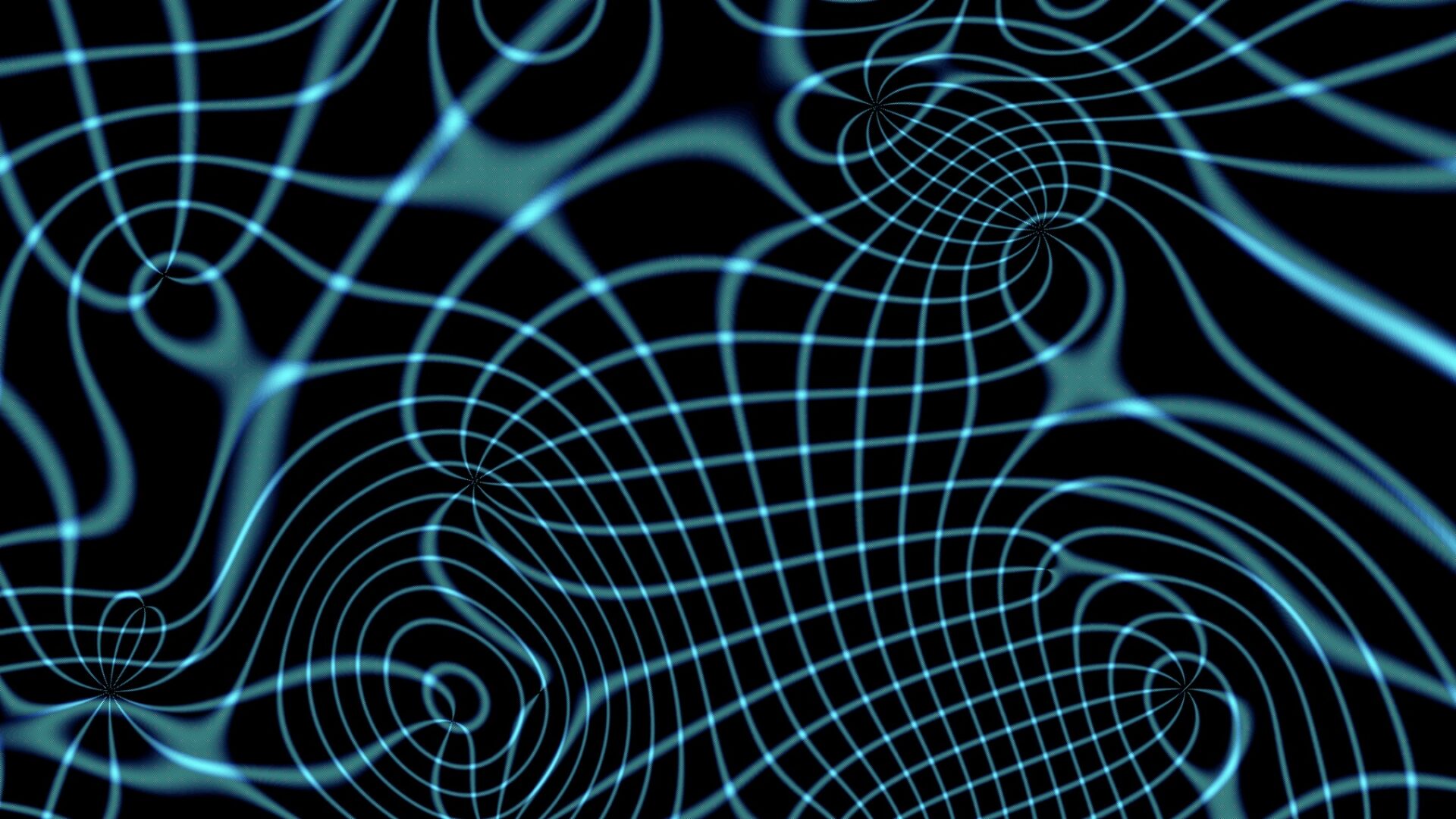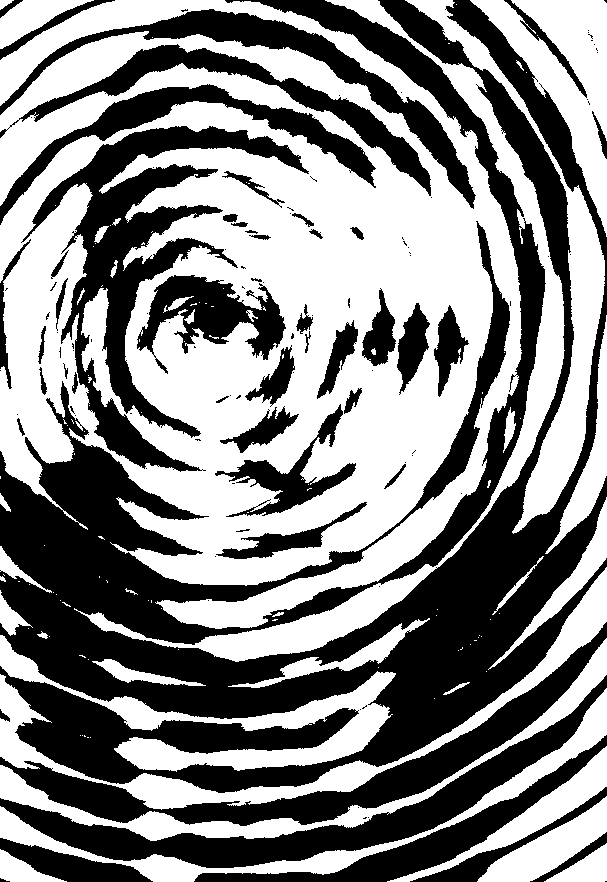
Spiraling toward completion
I’m halfway done with my spiral.
My best guess is that it’s taken about fifty hours (not counting the time it took to develop the 2.5 gigabyte gradated spiral pattern I’ve been modifying) sitting here in front of the monitor with the Intuos2 stylus in hand, drawing over the line pattern to create this hand-drawn halftone. I’ve followed one of the arms of the spiral around the center 400 times to get to the very middle. The next step is to start over at the outside and work my way in again using the other arm of the spiral. I’m probably about fifty hours away, then, from finishing this pattern so that I can start creating images from these irregular spiral patterns.
I couldn’t have done it without using an adjustment layer in Photoshop to increase the contrast and show me only the innermost line with very little of the gradation between windings. As I wrote in A Little Slice of a Big Spiral staring at this pattern for prolonged periods of time really hurts the eyes. Turning the monitor to its dimmest setting and increasing the apparent contrast made it possible for me to sit for hours at a time on this file while taking reasonably short breaks to rest my eyes.

And what is the point of all this? To the right is a crude example of the sort of graphic quality a pattern like this can produce on a small scale. As the source for my image I used the sketch from the fourth Name That Celebrity Sketch and applied only the innermost center of the spiral. If you step back or blur your eyes (I don’t have any choice about blurring my eyes anymore) you can see the face, but it is built up from the ragged spiral. Eventually this will be used on a much larger scale, to create a photographic image made from some very un-photographic textured lines.
The high resolution of the pattern file means that I could theoretically work on an image up to twenty-five feet square with this image. In actuality I’ll have to stay within the outer circle, restricting me to a maximum square of seventeen and a half feet on a side, with some more on one side if I decrease the other dimension. Because I work at a higher resolution than my final output in order to take advantage of antialiasing from the downsampling process, my maximum size will really be something closer to five feet on a side if I decide that the center of the spiral will be at the center of the image. The location of the center of the final spiral may cut my final maximum size down farther, but I might be able to work with a little less resolution and still have the file be of enough greater resolution than the final output, which would give me some wiggle room on my final maximum size.
This may seem complicated and esoteric, but the final result is that that I’ll be able to create a photographic image several feet wide, made up of a single essentially hand-drawn line. That will be a huge breakthrough for my process.
Spirals
There is a japanese horror movie called Uzumaki, based on a manga comic of the same name. A town is obsessed (or possessed) by the uzumaki, spiral patterns. I’ve only seen the movie but they do some fun stuff with composition and fx… I’d like to read the manga, see what the writer/artist did with the still pattern, versus the moving spiral of the film …